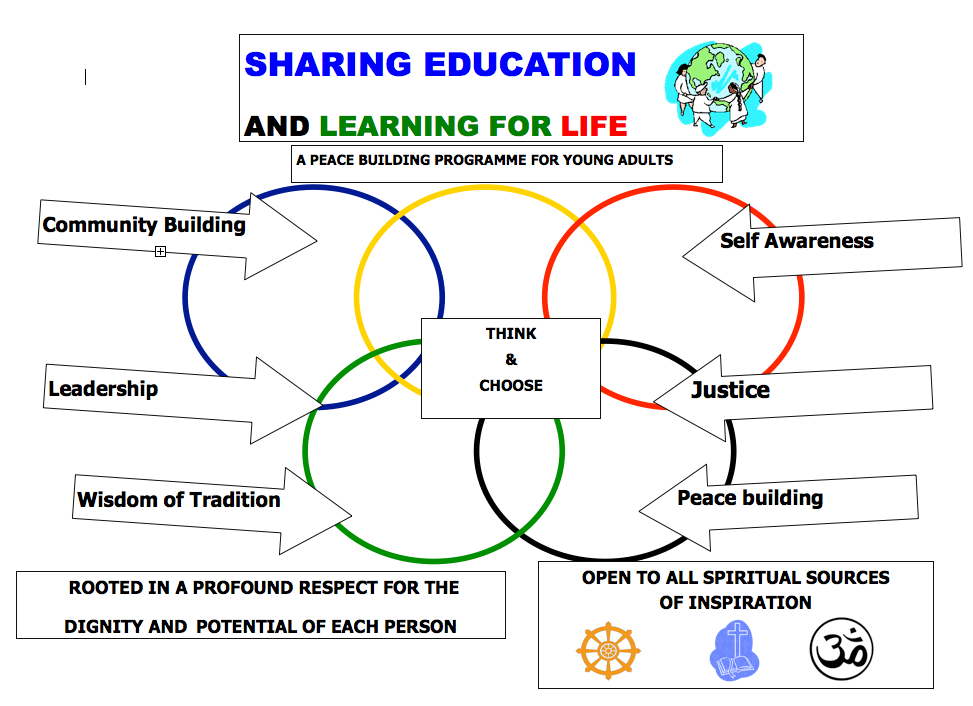SELL OVERVIEW
The first of the facilitators points out the name of the programme. Sharing Education and Learning for Life (SELL). They explain that it is a participative programme with the emphasis on Learning by Sharing our experiences together.
Put the title on the wall to start building up your wall display which, if possible, should remain on display throughout the workshop:
Next the banner Rooted in a profound respect for the dignity and potential of each person is indicated. This is fairly self explanatory and no more needs be said than that the SELL programme was born out of the faith heritage of the authors who are Christian.
However, the next banner is equally important: Open to all Spiritual sources of Inspiration. In the programme references are made to other faith stories and the richness of these are highlighted and affirmed
Next the circles are pointed to and the question asked, what do you see?
We see circles, they are of different colours, they are overlapping etc.
Do they remind you of anything? The Olympic Games, FIFA world cup.
And what might the circles represent? Why do you think they overlap?
The continents. The overlapping represents the connection between peoples.
The SELL programme seeks to encourage us to bring about God’s dream of one family building God’s kingdom on earth. Even the different colours that make up the circles which overlap is expressing the hope that people of different backgrounds, spiritualities, cultures can learn to live in peace together.
Q. How many races are there in the world? A. One – the human race.
And what might the circles represent? Why do you think they overlap?
The continents. The overlapping represents the connection between peoples.
The SELL programme seeks to encourage us to bring about God’s dream of one family building God’s kingdom on earth. Even the different colours that make up the circles which overlap is expressing the hope that people of different backgrounds, spiritualities, cultures can learn to live in peace together.
Q. How many races are there in the world? A. One – the human race.




